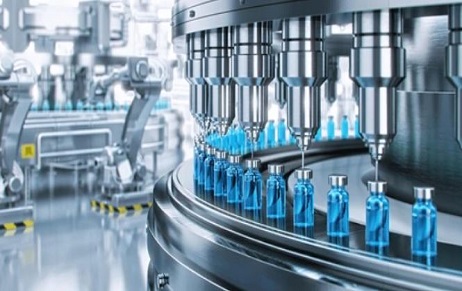Intellectual Property Rights (IPR) are like different keys for different locks. Just like every lock…
Intellectual Property Rights and Pharmaceutical Sector: Analyzing the Dynamic Relationship in India’s Drug Market
INTRODUCTION:
The Indian pharmaceutical companies are in a unique position where they are balancing the role of being a generic Global drug supplier and also ensuring that their products are accessible and affordable to everyone. However, balancing through such many factors especially to maintain the interplay between the regulatory policies and the pricing strategies is crucial. National governments use a range of policy tools to correct market flaws and regulate drug costs and pricing.
The Pharma sector of India portrays a fascinating case study where it balances regulatory policies and IPR and establishes a dynamic relationship between these factors. Intellectual property rights (IPRs) especially patents are extremely crucial for encouraging innovation in the pharmaceutical sector. It gives only the businesses who have created a certain drug a right to sell it, recovering their R&D expenditures. But this may also cause increased drug costs while the patent is still in effect. Regulations also have an impact on the degree of competition within the pharmaceutical sector. However, if patents expire, regulatory frameworks that make it easier to approve generic drugs may result in lower drug costs and more affordability for the consumers. To ensure both that is innovation and accessibility in the pharmaceutical industry, a delicate balance must be struck between fostering generic competition and safeguarding intellectual property rights and encouraging innovation. [1]
ANALYSIS:
Some of the considerable factors are as follows:
Innovation
The primitive objective of granting any Intellectual Right is to incentivize the innovation of its creator and provide them protection so there shall not be any infringement of their IP right in the future. Patents serve as an essential tool for the encouragement of innovation and business in the pharmaceutical industry. It also helps the companies to cover the substantive investments that they put into the Research and development of the patent. On the other hand, detractors of strict patent protection contend that it can inhibit innovation by monopolizing markets and reducing competition.

The impact of pharmaceutical innovation in the Indian environment is a topic of continuous discussion. Because of the possibility of facing patent infringement lawsuits, domestic companies may be discouraged from undertaking research on specific pharmaceuticals, even though patent protection might promote international investment and collaboration.
Pricing
The Indian pharmaceutical industry is a unique market that is characterized by price-controlled regulatory policies that coexist with a market-driven segment. The “National Pharmaceutical Pricing Authority (NPPA)” has implemented the “Drug Price Control Order (DPCO)” which serves as the cornerstone of pricing regulations that govern the essential medicines listed in the “National List of Essential Medicine (NLEM)”. This drug price control order is aimed at ensuring the affordability and accessibility of essential medicines and drugs especially for the marginalized and underprivileged populations.[3]
Government and regulatory bodies aim to shape pharmaceutical pricing through such a mechanism that it enhances accessibility and promotes equitable distribution of medicines and drugs, however, it creates a challenge for the companies in maintaining their profitability and sustaining research and development efforts while maintaining their market position.[4]
The most complex problem that this whole scenario creates is that a new drug creation requires tons of investment into Research and Development but if there are regulation in place that requires the companies to sell these drugs at a lower price then the costs of R&D that are put into the drug innovation will not be covered. This may result in lesser innovation and patent creation.
Research and Development:
Pharmaceutical companies have a very high patent propensity, and research managers generally report that patents are critical to maintaining a competitive edge or that removing patent protection for pharmaceutical products will result in a significant reduction in research and development. Substantial R&D costs are frequently incurred after a drug’s initial launch in order to improve its pharmacological qualities or conduct additional clinical testing across a larger range of indications (diseases) or patient populations. Therefore, the availability of patent protection for novel applications of already-existing chemicals can be a significant factor. However, whether incremental innovation brings greater advantages than costs in a given industry remains to be shown. These safeguards are necessary due to the enormous expenses associated with creating new medications and carrying out clinical studies; they guarantee businesses can make a profit while preserving their competitive advantage in the market.[5]
Policies related to regulations are also quite important. They have an impact on the degree of industry competitiveness, especially when it comes to frameworks that make it easier to approve generic drugs. While patents offer a brief exclusivity that promotes innovation, the release of generic versions after a patent expires lowers the cost of medications and makes them more accessible to the general public. Therefore, maintaining both innovation and accessibility in the pharmaceutical industry requires striking a balance between defending intellectual property and encouraging generic competition.[6]
Competition
There are many facets to the interaction between IPR and competition in the pharmaceutical industry. Pharmaceutical corporations are granted the exclusive right to market new pharmaceuticals through patents and other intellectual property protections, thereby establishing a temporary monopoly. Because it prevents early generic competition, this exclusivity is crucial for encouraging innovation because it enables businesses to recover their significant R&D expenditures.[7]
However, during the patent protection term, exclusivity may also result in increased drug costs, which could restrict access to necessary medications. By guaranteeing that generic medications can be sold when patents expire, regulatory laws seek to strike a balance. The emergence of generics boosts competition, which lowers prescription costs and improves affordability for patients.
Procedures for contesting and upholding patents are vitally crucial in nations where generic competition is fierce. The capacity of patent holders to secure preliminary injunctions against accused infringers while litigation is pending, or to recoup lost earnings from infringers, is a crucial element that affects the return on research and development. From the standpoint of potential competitors (as well as payers), it is equally crucial to be able to challenge patent applications, have patents declared unenforceable or invalid, and countersue patent holders for breaking unfair trade practices or competition laws.[8]
In order to maintain this equilibrium, regulatory frameworks that make it easier for generic pharmaceuticals to be approved are essential. They assist in making sure that, in the end, consumers gain from innovation generated by IPR in the form of lower prices and more competition. The pharmaceutical industry depends on the interaction of regulatory regulations and intellectual property rights to preserve innovation and accessibility.
CONCLUSION
Pharmaceutical economics are known to be exceptionally sensitive to intellectual property rights (IPRs) and to be exceptionally knowledge-intensive. The documentation and understanding of the interactions between intellectual property rights (IPRs), complementary laws and policies, industry globalization, and the effects these have on access to and pricing of medicines, R&D, manufacturing, and commerce have advanced somewhat.
The relationship between domestic intellectual property rights (IPRs) and trade legislation influences the strength of patent protection for any given product in a given nation. This is especially crucial for the pharmaceutical industry, as high-quality manufacturing capacity is concentrated in specific regions and transportation costs are relatively cheap compared to the product value. One crucial issue is the laws controlling national IPR exhaustion, “reimportation,” and parallel commerce, as well as patent holders’ ability to bar competitors through trade dispute procedures and customs procedures. The degree to which a nation permits “product by process” protection that is, the ability to bar imports of unpatentable or unpatented pharmaceutical products if those products were made overseas utilizing a domestic market-patentable process—is a matter about subsidiary trade.
Author: Siddhi Jakatdar, in case of any queries please contact/write back to us via email to chhavi@khuranaandkhurana.com or at Khurana & Khurana, Advocates and IP Attorney.
[1] Intellectual Property Rights And Pharmaceuticals: Challenges And Opportunities For Economic Research, Iain M. Cockburn. https://www.wipo.int/edocs/pubdocs/en/wipo_pub_1012-chapter5.pdf (last accessed: 18.05.2024)
[2] Intellectual Property Rights And Pharmaceuticals: Challenges And Opportunities For Economic Research, Iain M. Cockburn. https://www.wipo.int/edocs/pubdocs/en/wipo_pub_1012-chapter5.pdf (last accessed: 18.05.2024)
[3] “Factors influencing pharmaceutical pricing – a scoping review of academic literature in health science”, Maria Angelica Borges dos Santos, et. al, Journal of Pharmaceutical Policy and Practice in 2019.
[4] Ibid.
[5] Intellectual property rights and Indian pharmaceutical industry: Present scenario, Ajay Prakash, et.al., Indian Journal of Pharmacology(2018), Volume 50, Issue 03.
[6] Ibid.
[7] Intellectual Property Rights And Its Application Toward Pharmaceutical Industry With Special Reference In India, Susanta Kumar Rout, Innovare Journal Of Education(2016, Volume 04, Issue 04.
[8] Ibid.



